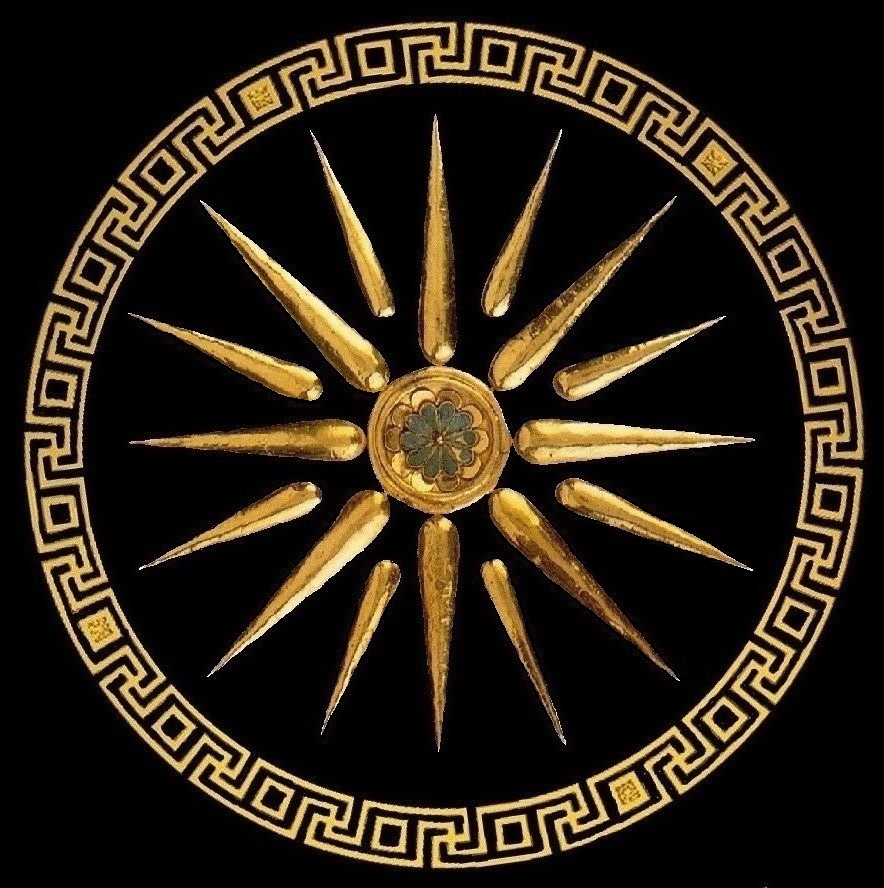|
|

Saints Kiril and Metodiy
(Saints Cyrill and Methodius)

On the fresco is in Cyrillic not Glagolitic alphabet
Saints
Kiril and Metodiy
- Old
Makedonian language: ''Кириллъ и Меиодїи'', (''SLO
VEN - SLOVO na VENETITE'' - WORD of the Venetians, SLOVEN - THE
WORD OF GOD, SLOVENI - THE
PEOPLE WHO SPREAD THE WORD OF GOD OR THE PEOPLE WHO SPREAD THE
WORD OF GOD,... means
nothing scary or shameful, BUT PEACEFUL AND PROUD. More
precise interpretation of the word SLOVEN - SLO VEN,
is WORD of the Venetians - those
who speak the language of the Venetians), were
Makedonian holy brothers and all-Soveni educators, born
in Thessalonikeon (Solun) in the ninth century, who became
missionaries of Christianity among the Slavenians (Sloveni not
''slavs'') of Greater Moravia and Pannonia.
KIRIL - KIR IL
KIR - К (how) IR (Аr the creator) hence lord - sir,
IL - Ile the
Makedonia ancient god of the Sun.
Lord god - Kiril.
METODIY - MET ODI Y
MET - МЕ Т - МЕ (the Goddess Mother Ma, syllabic) Т (Sun, light, ancient deity) honey,
ODI - go,
steps
Y - Ј - y, addition.
METODIY - ME TOD IY - ME (the Goddess Mother Ma, syllabic) TOD (TOT, an ancient deity of knowledge) IY (addition).
A
blissful step - Metodiy.
Through
their work they influenced the cultural development of all Sloveni,
which is why they received the title of Apostles of the Sloveni. They
are credited with inventing the Glagolitic alphabet, the
alphabet used to transcribe the ancient Makedonian language. After
their death, their students continued their work and activity
among the Sloveni.
Both
brothers are revered in the Eastern Orthodox Church as saints
with the title Equal to the Apostles. In
1880, Pope Leo 13
introduced their glory into the Roman Catholic calendar. In
1980, John Paul 2
proclaimed them co-patrons of Europe, together with Benedict of
Nursia.
( SLOVEN - SLO VEN, WORD of the Venetians
)
WORD of the Venetians,
SLOVEN - SLO VEN, means
- they spoke similarly, not that dat they are genetically related.
The Makedonian Vasileos
Makedonon Alexandroy spoke
the ''WORD of the Venetians,
''sloven-ski - Makedonski''.
Because
Makedonia was banned by the Romans for centuries, the Makedonians
invented it "SLOVENI", but
this does not mean that we were genetically the same, with
others who spoke Slovenian languages, it should not divide us
with other Sloveni, but unites us.
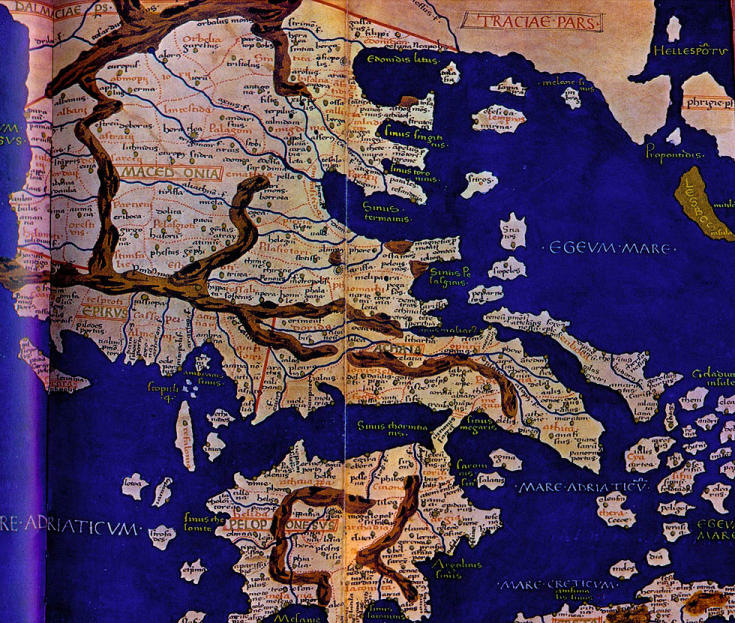
THEY
are NOT "GREECE", "ELAS", "HELAS",
on the ancient maps, SUCH THING DOES NOT EXIST IN ANTIQUITY. "Greeks"
and "hellenism" is
a Latin invention.
The
Romans invented the "Greeks", but Latin priests after
the 11th century began to spread untruths about "Greeks"
and "Hellenism" and began to distort history in order
to oppose to the "correct",
Christianization of the Sloveni in Moravia, thus to oppose the
Makedonian revivalists Cyril and Methodius and his disciples,
because the Makedonian vasileos Makedonon Alexandroy was a
"powerful" tool against the Latins priests.
It
was inadmissible for the
Makedonian vasileos Makedonon Alexandroy
to be "Sloven-speaking", Latin
priests
began to invent "ancient historians" and distort the
history.
The name of the Makedonian vasileos Alexandroy Makedonion to
replace him with "great" - "the great",
"magnus", .. to give him the epithet "hellen",
which means "pagan" not a Christian.
"Hellenes"
does not mean a nation but religion invented
by Latin priests,
the Greeks today persistently lie that "the Hellenes"
is a nation.
Biography
St. Kiril
and St. Metoduy
of Thetsalonikeon
(Solun)
were born brothers from Thetsalonikeon
(Solun),
Makedonians
and all-Sloneni
educators from a respectable and rich family, father Lion
and mother Maria. The
older brother, Methodius, spent ten years among the Makedonians
as an officer. Then
he went to the Holy
Mountain
(mountain) Olimp - Olympus
and surrendered to a monastic feat. Kiril
(Constantine the Philosopher) later joined him here. Kiril
and Metodiy,
known as the Solunian
educators
brothers, have played a major role in Sloveni
history. Their
work made the Sloveni
peoples literate.
By
the beginning of the 9th century, a solid foundation had already
been laid for a wider and more organized missionary activity in
Western Paristrion.
At
that time, the Romei
Empire (Western
Rome
Empire)
was
experiencing a new cultural boom, so this wave splashed the
cities that were far from Constantinople, especially Solun.
In
the first decades of the 9th century in Solun
lives the family of a high official of the imperial government,
assistant to the Romei
strategist of Solun
and the Solun
area. It
was Leon
with his wife Maria.
Their
nationality is clearly Makedonian,..
their names are strongly Makedonian.
The
family had several children, but only the names of the eldest -
Metodiy
and the youngest
Constantine
- are mentioned. Not
even the secular name of Metodiy
is mentioned, who received this during his monasticism.
Godly
parents have directed their offspring from infancy to
Christianity, seeking to help them apply the sublime Christian
truths in their lives. From
his youth, Constantine dealt with the writings of St. Gregory of
Nazianzis
and Dionysius of Aeropagis.
His father sent him to Constantinople (Constantinople -
Istanbul) to continue his education at the Imperial Magnaur
School, where, in addition to theological sciences, grammar,
arithmetic, geography, astronomy, music, poetry, rhetoric were
studied. In addition to these sciences, Constantine also studied
languages - Latin, Hebrew and Syriac. After
completing his higher education, Constantine was appointed
librarian at St. Sophia Church, and was later appointed
professor of philosophy at the school where he graduated. Then
he was named Constantine the Philosopher.

Painted
wall
of the Holy Brothers in the monastery of St. Jovan
Bigorski, Debarunfortunately the letter on the fresco is in Cyrillic not Glagolitic
As
highly educated and talented persons, Kiril
and Metodiy
will be assigned very difficult and responsible tasks by the
Roman court.
They
were first sent on a mission to the Saracens (Arabs) in Baghdad,
which, like the Khazar and Moravian missions, was part of
Pomegranate's political program, whose main goal was to
Christianize the Saracens, Khazars, Moravian Sloveni,
Paristrion (state of tatars),
Russians and other peoples of the East and
north of Romeia
and to impose Romeian
ecclesiastical authority on them.

... Old
man
foolish
Parestrians or Tatars, 8not
"Bulgarians" -
the text is manipulated) are all cannibals, they will eat you
alive before you baptize them. Everything
is so wild that they eat live meat and steal a live child from
the mother ...
Not the "Bulgarians" but the Tatars, Cyril did not "baptize" the Tatars, he tried with his brother Methodiy (us) they created the "glagolictic alphabet", the they disciples Kiment and Naum Ohritdski and Kostantin Bregalnicki "baptized" the Tatars and passed it on the ''Cyrillic alphabet'' in Preslav from Makedonia which was already in use with certainty in the Bregalnica region,... the Bulgarians do not know their history.
When
the Khazar kagan
Kagan asked romeian king
Michael for preachers of the faith in Jesus Christ, the two
brothers were found by order of the king and sent to the Khazars.
After
convincing the
Khazar kagan Kagan
of the faith of Christ, they baptized this king and many of his
chiefs and an even greater number of people.
After
some time they returned to Constantinople, where they
composed the Sloven
alphabet of thirty-eight letters and began to translate
the church books in Makedonian
language.

At
the invitation of Tsar Rostislav, they went to Moravia and there
they spread and established the Orthodox faith, so they
multiplied the books and gave them to the priests to teach the
youth. Later,
at the call of the Pope, they left for Rome, where Kiril fell
ill and died, on February 14, 869. Then
Metodiy returned to Moravia and until his death tried to
establish the faith of Christ among the Slovens there. After
his death on April 6, 885 - his
more
trustworthy students, led by St. Clement of Ohrid as
bishop, crossed the Danube and descended south to Makedonia,
where from Ohrid they continued to work on the same work started
by Metodiy and Kiril in the north.
As
for Methodius, there are very few sources according to which he
received a secular education and devoted himself to civil and
military service. He
was endowed with a Christian virtuous life and state and
military abilities. For
a long time he ruled the Bregalnica area of Makedonia and
contributed to the deepening of Christianity in the Makedonian
soul in that part of Makedonia.
His
brother Constantine was especially credited for this success.
The
missionary activity of the holy brothers among the Makedonians,
especially the restoration and application of the Makedonian
alphabet is noted in the book (zhitie) of St. Naum. This
preceded the translation of the holy books into the language of
the Makedonians in Solun area and
the missionary work among the Western Sloveni in Moravia.
Some
time before their missionary work, the holy brothers retired to
the Polychron Monastery on Mount Olympus, where they actually
prepared for their epochal missionary work. The
monastic loneliness was interrupted twice when they were sent by
the Romeia (Byzantine) government of the Patriarch of
Constantinople on missions between the Saracens and the Khazars.
They
performed these missions with great success. The
Short Biography of Constantine
-
Kiril,
written by his student Kliment Ohridski, states that:
Cyril
discovered the Khazar kagan that he was not of Romeia
descent, but that his grandfather was one of the people of a
foreign "king" but fled to Romeia.

St. Kiril
Rostislav,
the knez of Great Moravia, sent a request to the Emperor of
Romea, Michael 3 to send him, a bishop and teacher, who would
explain to them in their language the true Christian faith..
The
choice fell on the holy brothers. They
were almost ready for this mission as well, as many of the holy
books had already been translated into Sloveni
(Old Makedonian)
language.
They
chose worthy students and helpers and set out for Moravia.
There
they were welcomed with great joy and great honors. Shortly
afterwards they opened a school, in which they prepared future
priests and teachers for the Western Sloveni
peoples. Here
they encountered great resistance from the Teutonic priests of Holy
Roman Empire: accused of heresy. They
were forced to go to Rome and prove their orthodoxy. They
were received in Rome with great honors by Pope Adrian 2.
He
approved the Sloveni liturgical books and ordered that they be
placed in the altar of the church of Santa Maria Maggiore and
that worship be performed in the Sloveni language in three Roman
churches. Kiril
fell seriously ill in Rome and died on February 14, 869. Metodiy
continues the epochal missionary work among the Moravians alone
with the help of his disciples, who were ordained priests in
Rome. The
enmity from
the Teutonic priests of Holy
Roman Empire
did not stop. Exhausted
by toil and torture, St. Metodiy
died at Nitra in 885. His
disciples were subjected to torture and persecution. Some
of them sold out as slaves.
The work of the holy brothers after the death of St. Metodiy fell into a great crisis, but thanks to their most gifted students - St. Clement and St. Nahum, the Ohrid saints and miracle workers, teachers and educators, using their missionary method, which aimed to proclaimed the truth of God to the new nations, beginning their cultural identity, remained a living form for the Holy Church and for the missionaries of all times.
The holy brothers Kiril and Methodius managed to become apostles of the Sloveni. They wanted to serve the good of all Sloveni peoples and the unity of the Universal Church. For these and similar merits, in his apostolic epistle "egrigae virtulis" Pope John Paul 2 on December 31, 1980 declared them co-patrons of Europe, whose patron is St. Benedict, proclaimed by Pope Paul 4 on October 26. , 1964.

The
tomb of st. Kiril (St. Cyril) in Rome.


Moravian
mission
The
reason for the Moravian mission of Kiril and Metodiy was the
letter of the Moravian knez Rostislav to the emperor of
Romeia Michael 3. Rostislav sought to establish and strengthen
his state, Moravia, which was in danger of the Teutonic priests of Holy
Roman Empire.
To
remove the danger he sought preachers who would spread the
teachings of Christ in the Sloveni
language. Romeia
will accept his message because the Holy
Roman Empire
-
Paristrion (state of tatars) alliance was a danger to both
Moravia and Romeia security.
Kiril
and Metodiy accepted this task, but they encountered many
problems, and one of them was the lack of an alphabet in which
to translate the most necessary books for worship. Constantine,
assisted by Metodiy, created the first ''slovenski''
alphabet,
>>>>GLAGOLITZA <<<<
which
contains 38 letters. In
the Glagolitic alphabet, 24 letters were in the form of the
ANCIENT MAKEDONIAN LETTER - ''KOINON
MAKEDONON'' - the Venetian alphabet, and the remaining 14
according to the phonetic system of the Makedonian language.
n
863 they arrived in Moravia where they opened a number of
schools and churches in which Slavic language education was
spread, and a large number of new teachers were trained. Latin-Teutonic priests of Holy
Roman Empire
clergy began to accuse them of spreading heresy, so the pope
summoned them to his court in Rome. On
the way to Rome Constantine, Methodius and their disciples
stayed in Pannonia where they laid the foundations of Sloveni
literacy in this country as well.
Before
arriving in Rome, they stayed briefly in Venice where
Constantine, who was known as a good philosopher and orator,
argued with the trilinguals. those
who advocated the spread of Christ's teaching only
),
Hebrew, Latin and Ionian - Danai language
(Ionian - Danai - greek is after - greek
is
for people to understand what it is, people do not understand
the Ionian-Danai language and make a difference. The
Romans were the first to call the Danai
"relatives of the Ionians of Asia Minor" as Greeks,
modern Greek language
is different from Ionian - Danai,
"modern Greeks" do not understand ancient "Ionian-Danai"
language.
The
first Greek state for the first time in history was created
by foreigners under the leadership of the
foreign
Bavarian monarch, after 1835).
Constantine
refuted the accusations, saying that every nation has the right
to its own language.
When
they arrived in Rome, Constantine brought the relics of Pope
Clement, who was martyred in 100 AD.
and
who was later canonized by the Roman Church.
In
Rome in 869, Pope Adrian dedicated the Sloven books, which means
that the Roman Church officially recognized the Sloven-ska
literacy.
Shortly
after his official confession, Kiril
fell ill and died. After
his death, Metodiy
resumed his activities, but was constantly attacked and
slandered by the Teutonic priests of Holy
Roman Empire
clergy and exhausted from fighting them, from prisons and
persecutions, he died in 885.
Kiril
and Metodiy translated several church books such as the Sunday
Gospel for reading on Sundays and holidays, The Minister - a
book containing prayers and readings in various services, ''The
Trebnik'' - a book of prayers and readings for various occasions
in people's lives.
Metodiy
translated
''The Nomocanon'' book, which is a collection of rules and laws
for the church, ''The Pateric'' - a collection of short
biographies of various church fathers.
In
the biography (zhitie) of Kiril he is mentioned as an original
author of various poems.
Kiril
and Metodiy
based
on the Makedonian
language from the vicinity of Solun
- Thessalonikeon,
created the first literary language for the
all
other Sloveni
people
known as Old Slovenic
or Church-Sloveni
language, created the Sloveni
''glagolitza''
-
Glagolitic
alphabet,
translated the books into Sloveni
language,
and through the spread of Christian teaching in Sloveni
language,
laid
the foundations of Sloveni
literacy and culture.
G L А G
О L I T Z A -
Glagolitic
alphabet
The
Glagolitic alphabet (early
Christian alphabet) was created by St. Kiril
(827-869) and St. Metodiy
(826-885) in 855 or about 862-863 for translating the Bible and
other books into Sloveni
languages.
The
name comes from the Old Sloveni word, meaning ''the word''
(also
the origin of the letter - G - „Г“).
Glagolitic
alphabet has 41 letters, but their number varies slightly in
later versions. Twenty-four
of those 41 letters originate from the ANCIENT MAKEDONIAN
LETTER - VENETIAN
LETTER, in Glagolitic
alphabet
they have an ornamental appearance.
Croatian
Glagolitic has a long and interesting history, longer than 1000
years. Croats
were the only people in Europe who
the
pope allowed to use his own language and script in the church.
The
Romeia (Byzantine) emperor MICHAEL 3 (842 - 867) who
addressing CONSTANTINE - KIRIL, said:

"BECAUSE
YOU ARE CITY OF SOLUN (Tessalonikeon), AND ALL SOLUTIONS SPEAK
PURELY SLOVENI DIALECT".
In
the oldest "Life of St. Metodiy
from the 9th century the words are completely transferred
of the
Romeia emperor MICHAEL 3, addressed
to the Holy Brothers of Solun: „...BECAUSE
YOU ARE CITY OF SOLUN (Tessalonikeon), AND ALL SOLUTIONS SPEAK
PURELY SLOVENI DIALECT” .
HISTORY
Rostislav,
the prince of Great Moravia, wanted to free the population
in his principality
from dependence on the eastern Frankish priests, and so in 862
he asked the Pomic emperor to send two missionaries, Saints
Cyril and Metodiy, to Great Moravia. Kiril created a new
alphabet: ''Glagolitza - Glagolitic''. The alphabet was used in
Greater Moravia between 863 (when Kiril and Metodiy
arrived there) and 885 for government and church documents, and
in the Great Moravian School founded by Kiril, where the
followers of the Solun - Thessalonikeon, brethren (as well as
Metdiy himself) were educated.
In
886, the Nietzschean bishop of Nitra named Vihing banned the
letter ''Glagolitza
- Glagolitic'' and
imprisoned 200 followers of Metodiy
(mostly elementary school students). Then they were scattered
or, according to some sources, sold as slaves. However, three of
them reached Paristrion ( the state founded
by the of Tatars and Trakians, Tribalians, skutiand and
Makedonians) and were asked by knez Boris the First to educate
the priests in Sloveni languages. The conversion to Christianity
in Paristrion in 865, religious ceremonies were performed on
latin by priests sent by Romeia. For
greatest influence from to Romeia and to free
the state from them influence,
Boris saw the new Sloveni script and texts in the church as an
important step in preserving the independence of Paristrion. As
a result of the measures taken, two academies were opened in
city of Ohrid and Preslav.
From
there, the students traveled to different places and spread the
alphabet. Some
went to Croatia and Dalmatia, where they started the Croatian
variant that has been used for a very long time. In
1248, Pope Innocent 4
granted Croats a unique privilege of using that language and
script in the church.
The
oldest text where the name of Croatia is written is in
Glagolitic.
Some
of the students at the Ohrid School went to Bohemia, where
the alphabet was used in the 10th and 11th centuries, along
with other letters. Glagolitic
was also used in Russia, but quite rarely.
>>>>>
CYRILLIC
IS A LETTER THAT IS MISSED IN THE REGION OF THE FLOW
OF THE BREGALNITZA
RIVER, ... A RIVER LOCATED IN THE REPUBLIC OF
MACEDONIA. At
the end of the 9th century, the Cyrillic alphabet was
transferred to Preslav (Paristrion), more specifically
to The
Preslav Literary School by Konstantin Bregalnichki, st.
Naum and Klement from Ohrid. THERE
ARE MANY ARCHAEOLOGICAL FINDINGS FROM THE BREGALNIK
REGION THAT DATE FROM 9 CENTURIES AGO, AND THEY ARE
NOT SUFFICIENT STUDYED how in Makedonia and outside.
THOSE
ARCHAEOLOGICAL FINDINGS ARE LOCATED TODAY IN THE
PRIVATE BASEMENTS OF THOSE WHO DISCOVERED THEM AND ARE
WAITING TO SEE THE LIGHT the
truth for the Makedonian identity culture
and Makedonian genius. <<<<<<
In
improving the Cyrillic alphabet, two students of St. Kiril
and Metodiy, and that is St. Naum Ohridski, who is one of
the founders of the Preslav school in Paristrion, while
St. Clement of Ohrid in Paristrion converted Prince Boris
from a pagan to a Christian faith, for which he received
as a gift land around city of Ohrid, where he built a
monastery and a school. BUT THEY St. Naum and Kliment
Ohridski, out of respect for their teachers, kept the
Glagolitic - Glagolitza alphabet in the Ohrid school and
continued their activity. The Cyrillic alphabet originates
partly from the ANCIENT MACEDONIAN LETTER - THE VENETIC
ALPHABT, with (at least 10) unique letters coming from the
Glagolitic alphabet. She almost completely ousted the
Glagolitic alphabet during the Middle Ages.
Today
Glagolitic alphabet is used only in Church Slavonic and
sometimes in liturgical books in the mother tongue in the
Catholic Diocese of Kriжеevo in Croatia.
The
name the
Glagolitic - Glagolitza alphabet
in Czech is: ''hlaholice'', in
Slovak: hlaholika, in
Polish: głagolica, in
Russian, Macedonian and Bulgarian: ''glagolitza - глаголица'',
in
Croatian: glagoljica, in
Ukrainian: ''глаголиця'',
in
Belarusian: ''глаголіца'',
in
Slovenian: ''glagolica'', in
Serbian: ''глагољица''/glagoljica.

The
word "MAKEDONIA" in Glagolitic alphabet.

MAKEDONIA in Glagolitic alphabet

Zografski
four gospel - Zografski manastir
Features
 Азъ -
MY - (А a) Азъ -
MY - (А a)
 Бoукъі -
Buki - (B
b) Бoукъі -
Buki - (B
b)
 Вѣдъі -
See - (V v) - from
the Venetian alphabet
Вѣдъі -
See - (V v) - from
the Venetian alphabet
 Глаголи -
Word
(Глагол)
- (G
g)
- from
the Venetian alphabet Глаголи -
Word
(Глагол)
- (G
g)
- from
the Venetian alphabet
 Добро - Good - (D d)
- from
the Venetian alphabet
Добро - Good - (D d)
- from
the Venetian alphabet
 Естъ - ye - Russian
(Е е), (Є є);
Естъ - ye - Russian
(Е е), (Є є);
 Живѣте -
Live - (Dzh dzh - Ж ж) Живѣте -
Live - (Dzh dzh - Ж ж)
 Ѕѣло -
Evil
- (Dz dz Ѕ ѕ) Ѕѣло -
Evil
- (Dz dz Ѕ ѕ)
 Земліа - Earth - (Z z) - (Θ θ)
from
the Venetian alphabet
Земліа - Earth - (Z z) - (Θ θ)
from
the Venetian alphabet
 Иже - Y - и, ј - (И и) - (Ι
ι) from
the Venetian alphabet
Иже - Y - и, ј - (И и) - (Ι
ι) from
the Venetian alphabet
 И - i, Y
И - i, Y
 Г'ервь - Gh - (Ѓ ѓ)
Г'ервь - Gh - (Ѓ ѓ)
 Како -
How - (К к) Како -
How - (К к)
 Людьѥ - People - (Л л) -
from
the Venetian alphabet
(Λ λ)
Людьѥ - People - (Л л) -
from
the Venetian alphabet
(Λ λ)
 Мъіслите - think
- (М м) - from
the Venetian alphabet
Мъіслите - think
- (М м) - from
the Venetian alphabet
 Нашь - Наш - (Н н)
Нашь - Наш - (Н н)
 Онъ -
He - (О о) Онъ -
He - (О о)
 Покои - Peace - (П п)
- from
the Venetian alphabet
(Π π)
Покои - Peace - (П п)
- from
the Venetian alphabet
(Π π)
 Рьци - hands
- (R r) - from
the Venetian alphabet
(Ρ ρ)
Рьци - hands
- (R r) - from
the Venetian alphabet
(Ρ ρ)
 Слово -
word
- (S s) Слово -
word
- (S s)
 Тврьдо - hard
- (Т т) - from
the Venetian alphabet
T
Тврьдо - hard
- (Т т) - from
the Venetian alphabet
T
 Оукъ - Ук - (U
u) Оукъ - Ук - (U
u)
 Фръть - Fert - (F f) - from
the Venetian alphabet
(Φ φ)
Фръть - Fert - (F f) - from
the Venetian alphabet
(Φ φ)
 Хѣръ -
Her - (H h) Хѣръ -
Her - (H h)
 Отъ - От - (from
the Venetian alphabet )
Отъ - От - (from
the Venetian alphabet )
 Шта - Shta
Шта - Shta
 Ци - (Tz
tz) - Hebrew Tz tz Ци - (Tz
tz) - Hebrew Tz tz
 Чрьвь -
worms - (Ch ch) Чрьвь -
worms - (Ch ch)
 Ша - (Sh sh) - Hebrew shin ש
Ша - (Sh sh) - Hebrew shin ש
 Ѥръ -
Yer - Makedonian ' before
words beginning with the letter R ' (wow 'rzh ) Ѥръ -
Yer - Makedonian ' before
words beginning with the letter R ' (wow 'rzh )
 Ѥръі - Yeri - ' + I
Ѥръі - Yeri - ' + I
 Ѥрь - Yerey
Ѥрь - Yerey
 ІАть - Yat - from
the Venetian alphabet
A - (rejected
by the Russian in 1917 and by the Bulgarian in 1945)
ІАть - Yat - from
the Venetian alphabet
A - (rejected
by the Russian in 1917 and by the Bulgarian in 1945)
 Је - Ye - Е
Је - Ye - Е
 Ју - Yu
Ју - Yu
 Ѧсъ - Yus - small
Y
Ѧсъ - Yus - small
Y
 Ѫсъ (YUS - big) - [Големо
Јус] - (rejected)
Ѫсъ (YUS - big) - [Големо
Јус] - (rejected)
 Ѭсъ - [YUS - big]
(rejected)
Ѭсъ - [YUS - big]
(rejected)
 Θита - Fita - from
the ''Koinon Makedonon'' alphabet
Θ = DZ, θ = TH ;
Θита - Fita - from
the ''Koinon Makedonon'' alphabet
Θ = DZ, θ = TH ;
 Ижица - Idzhiza -
и (rejected
by the Russian in 1917)
Ижица - Idzhiza -
и (rejected
by the Russian in 1917)

The Glagolitic stone from Croatia - ''Bašćanska ploča''

Saints Kiril and Metodiy
(Saints Cyrill and Methodius)
Skopje Republic of Macedonia

Copyright © Makedonia is ALL ☼ MAKEDONIAeSE.com ☼ All rights reserved
Copyright ©
Makedonia is ALL ☼ MAKEDONIAeSE.com ☼ All rights reserved
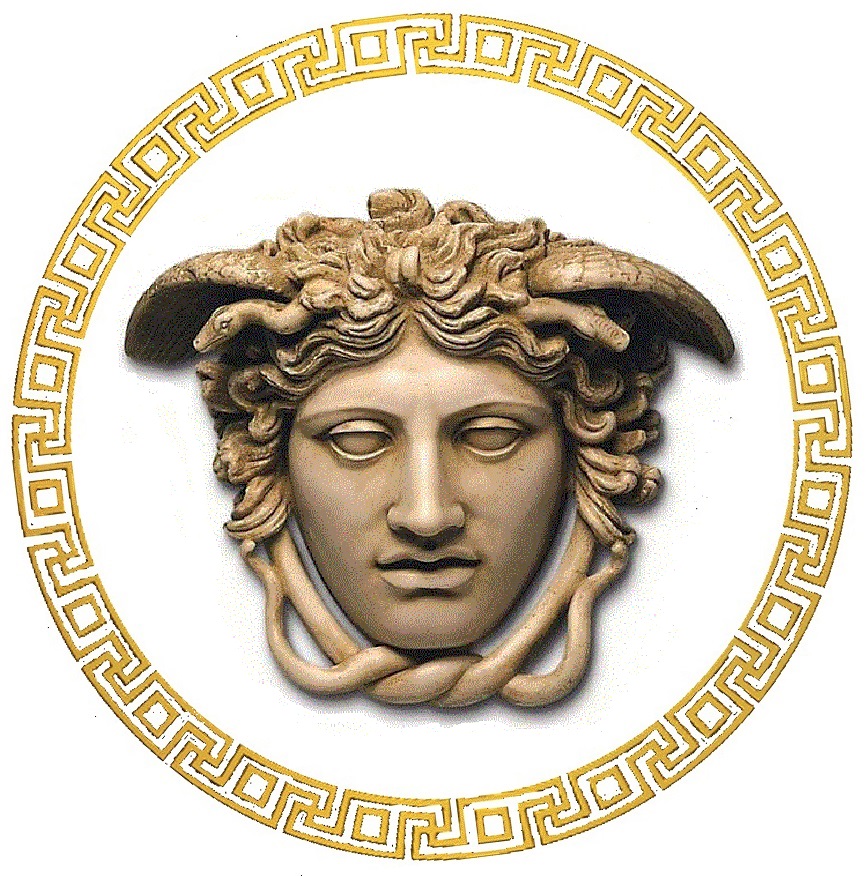

 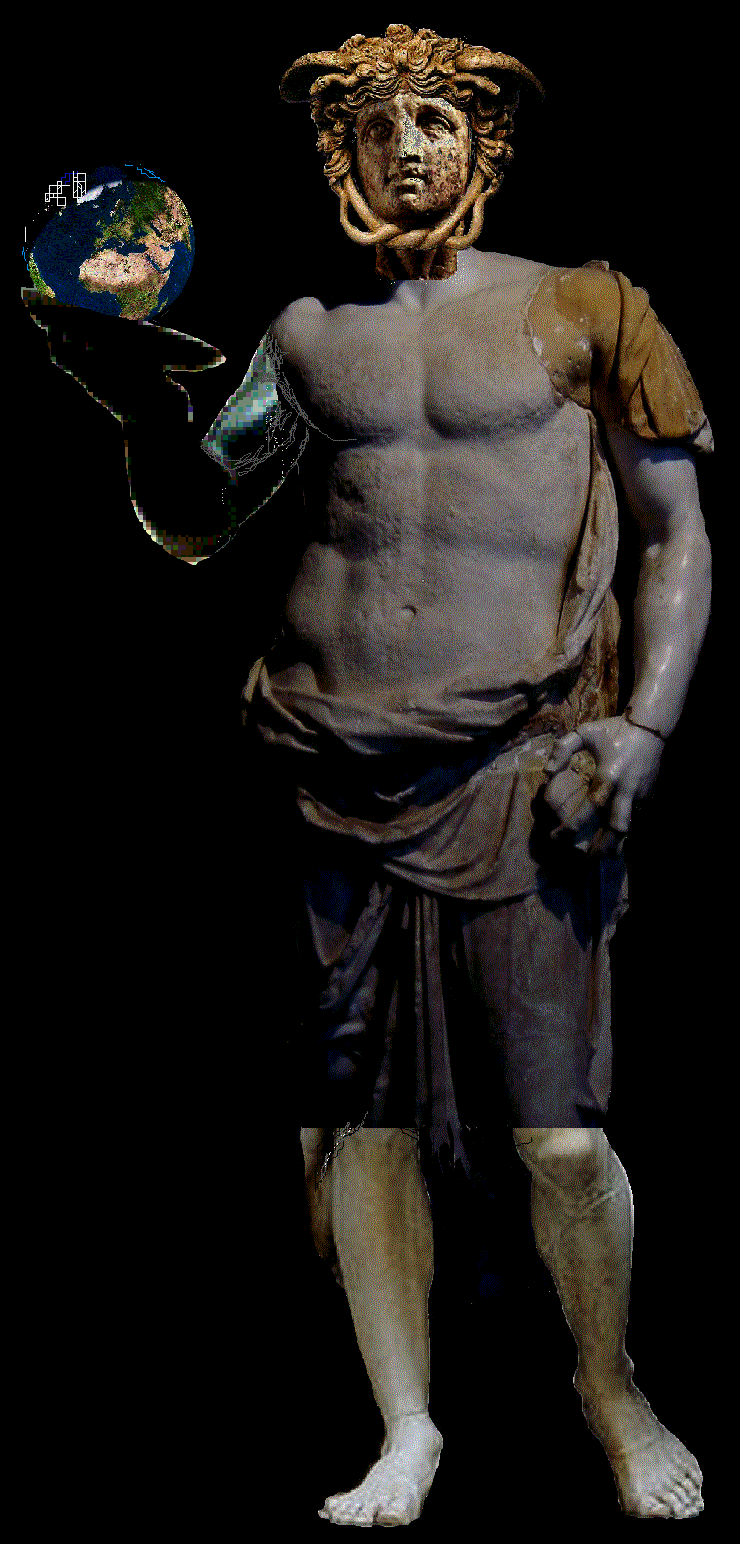 
Василеон Александрој Македонон и го подари светот на македонците, а тие како му возвратија,.. го отруја, фамилијата му ја уништија,... а денес наместо Македонон (Македонски) го нарекуваат ''велики''
или ''the great'', додека државата на латиница му ја нарекуваат ''Мacedonia'' - Мацедониа, итн,.. а да ќе заборавев,... дозволуваат некој друг да и бира име.
Ќе се најде ли некој да ги ''подисправи'' работите?
|

На ден 05 - 03 - 2009, е конструирана страната на Македонија е СЕ: http://www.makedonijaese.com/. Тој ден и се смета за роденден на организацијата Македонија е СЕ.
На ден 02 - 16 - 2016, е конструирана peзepвнaтa страната на Македонија е СЕ: http://www.makedoniaese.com/
страница која е по погодна за посета со мобилни апарати кои имаат инсталирано андроид софтвер.

Уште на самиот почеток интернет страницата на Македонија е СЕ, бидејќи зборува за Вистинската Историја на Македонија со историски факти, но и актуеллни политички настани, СТАНУВА ТРН во очите на сите непријатели на Македонската Држава, ма и трн во очите на некои политички организации во Р. Македонија.
Страницата на Македонија е СЕ, е конструирана како резултат за потребите на Македонскиот Народ и друѓите да се запознаат со Вистинската Македонска Историја, политика и болното Македонско прашање.
Страницата на Македонија е СЕ е конструирана за да помогне за зачувување на македонскиот идентитет, земја, култура, јазик, право за слободен говор, мисла, движење, соживот cо другите национални малцинства во Македонија, слободно искажување и потик на искажување МА и негување на националниот идентитет како во Македонија така и во светот.
|

ГАСНУВА
- АЛЕКСАНДАР
МАКЕДОНСКИ

Наскоро, ПОСЛЕ ПОВЕЌЕ ОД 2200 ГОДИНИ ЌЕ ИМАТЕ МОЖНОСТ ДА ГО ИМАТЕ МАКЕДОНСКОТО СОНЦЕ НА ФИЛИП МАКЕДОНСКИ, СО ПРАВИЛЕН ОБЛИК И ЛИК, ЦЕЛОСНО ИЗРАБОТЕНО ОД УМЕТНИЦИТЕ НА МАКЕДОНИЈА Е СЕ
|
  
 BACИЛEOH BACИЛEOH
КОНТАКТИРАЈТЕ СО МАКЕДОНИЈА Е СЕ
За сите инфомации, контакт е-маил: info@makedonijaese.com
Македонија
е СЕ, се
залага за
нова химна: ''
Земјa Mакедонскa''
|

 
НИЕ СЕ
ДЕФИНИРАМЕ
КАКО
ЉУБИТЕЛИ НА
СЛОБОДАТА
ЗА НАС
МАКЕДОНИЈА Е
СЛОБОДАТА
АКО ИМА
МАКЕДОНИЈА
ЗА НАС
ИМА И СЛОБОДА
Копираит © Македонија е СЕ ☼ MAKEDONIAeSE.com ☼ Сите Права Задржани
Македонија е СЕ ☼ Партија на Народот на Слободата ☼ МС ПНС
Историја на Македонија
МАКЕДОН ИЈА
ΜΑΚΕΔΟΝΙΑ
MAKEDONIA
BACИЛEOH
   МАКЕДОНОН
МАКЕДОНОН

АЛEКCAHДРОЈ
Македонско Име вечно нема да загине.
Глава даваме, Македонија и Mакедонско име не даваме.
Од Македонија и Алекcандрoj Македонон, славeн Василeoн Македон нема да се откажеме.
Cлава македонска ќе повратиме,
Алекcандрoj Македонон славен Василeoн Македон обожaваме,
Македонија, земја нај мила уважуваме.
Малку сме на број, ЕЈ, ХЕЈ,
силни сме во бој, ЕЈ, ХЕЈ.
ЕЈ, Алекcандрoj, OJ, OJ,
ЕЈ, Македонон, OH, OH.
Алекcандрoj Македонон славен Василeoн Македон, нас не предводи.
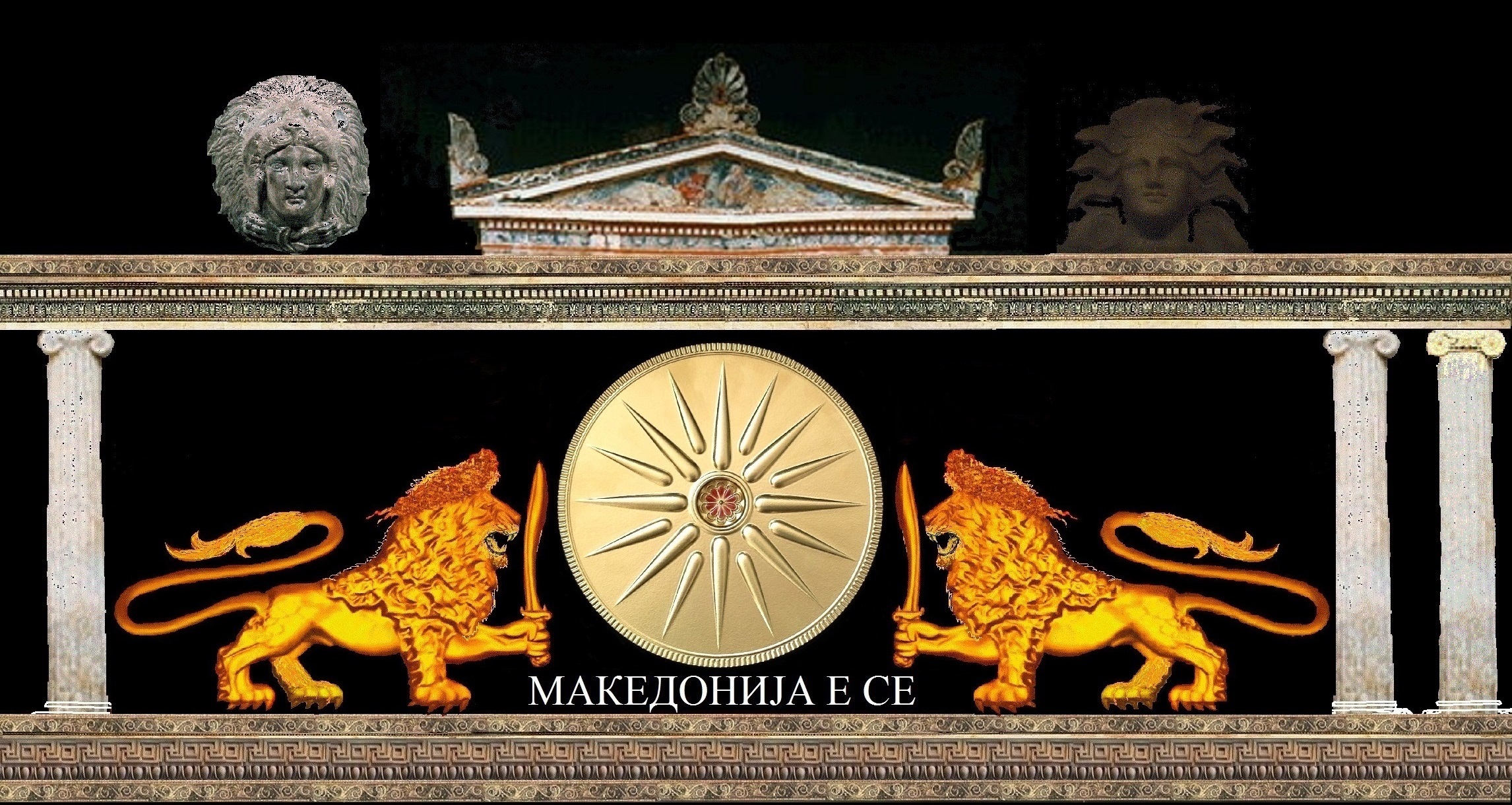
|
|
|


